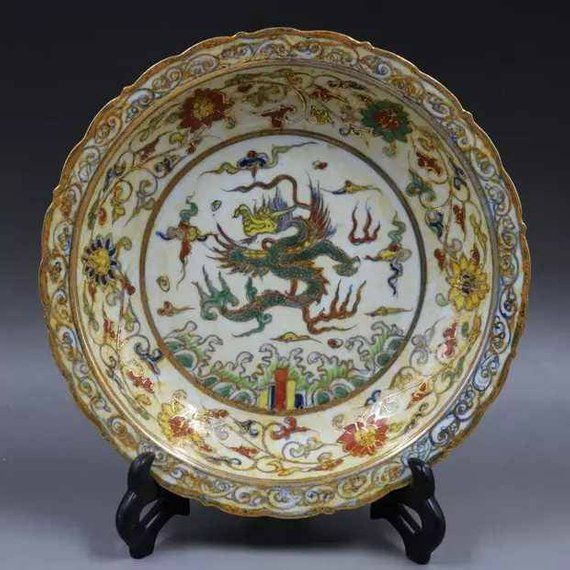The imperial wares that were specially manufactured for use at court were made particularly.
Ming dynasty ceramics.
With the qing dynasty came the beginning of the immense vogue for porcelain in europe that was to reach its height during the first half of the 18th century.
The tianqi emperor was the 16th and penultimate emperor reigned 1620 27 of the ming dynasty.
The qing dynasty is a period especially noted for the production of color glazes.
The ming dynasty m ɪ ŋ officially the great ming was the ruling dynasty of china from 1368 to 1644 following the collapse of the mongol led yuan dynasty the ming dynasty was the last imperial dynasty of china ruled by han chinese although the primary capital of beijing fell in 1644 to a rebellion led by li zicheng who established the shun dynasty soon replaced by the manchu led.
Ceramics in the late ming dynasty was produced in high quality and quantity making jingdezhen one of the earliest commercial centres in the world.
He was too young and indecisive to provide needed leadership.
They originate from 15 th century china when the country was ruled by the powerful ming dynasty and are made from the finest porcelain.
Wade giles romanization t ien ch i personal name xingming zhu youjiao posthumous name shi zhedi temple name miaohao ming xizong.
Pottery pottery ming dynasty 1368 1644.
The period also brought about significant emigration outside of the empire for the merchant class.
Ming porcelain is highly prized around the world and it is easily recognized as one of china s.
Its wares differ for the most part from those of the ming period in a fairly distinctive manner.
Qing potters succeeded in reproducing most of the famous glaze colors found in ceramic wares of the song yuan and ming dynasties.
Pottery pottery qing dynasty 1644 1911 12.
The porcelain of the ming dynasty of china 1368 1644 ce benefitted as did other arts from the economic success of the 15th century ce in particular and the consequent surge in demand for quality handcraft production both at home and abroad.
Born 1605 china died 1627 at age 22.
The mongol emperor shundi togon temür was defeated in a popular uprising and the hongwu emperor founder of the ming dynasty succeeded him in 1368.
Competition in the porcelain industry erupted following the failure of the corvée system.
With government control at a low investors could invest in many means of production especially in.
Many varieties of qing ware are common in the west.
In addition they created a variety of new glazes thus bringing vibrant energy to chinese porcelain art.
One of the best loved exports of the ming dynasty was its porcelain.
When the country had recovered from these internecine struggles pottery art took a new lease of life though under somewhat changed conditions.

